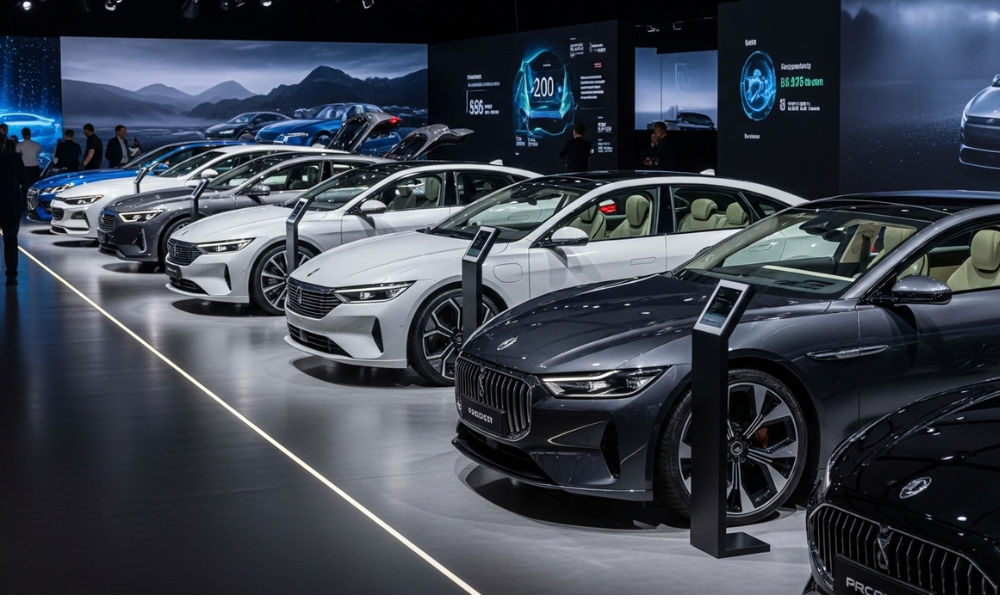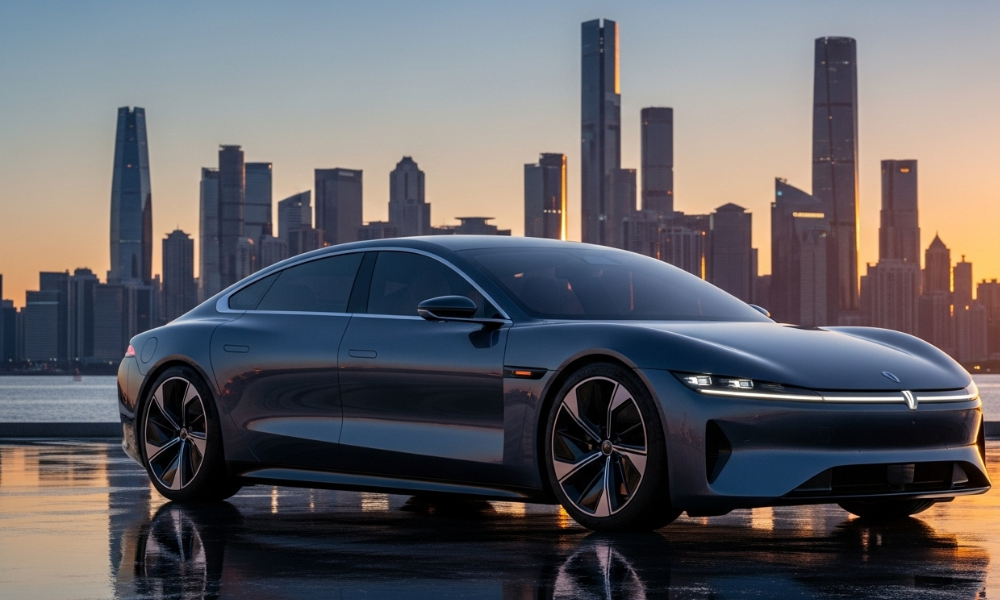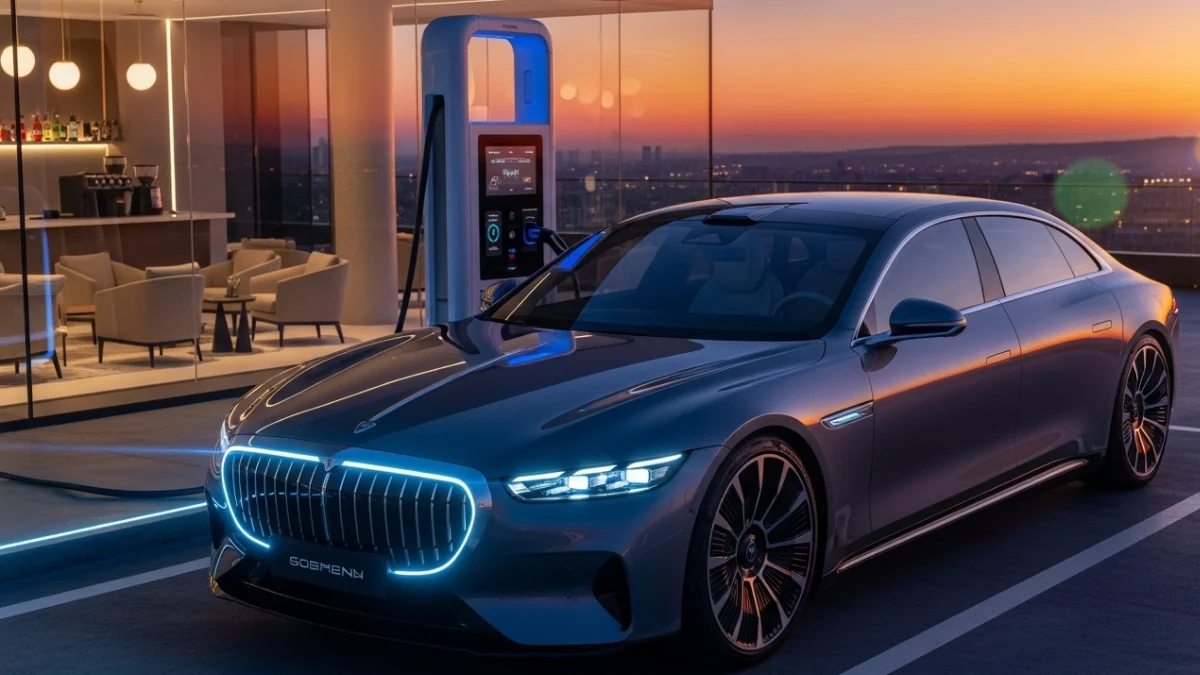Electric luxury cars are reaching a pivotal moment by 2025. Premium automakers accelerate electrification strategies while embracing sustainable materials and new technologies. Buyers expect performance, craftsmanship, and digital experiences that surpass today’s offerings. Pravi Celer vision highlights how these elements converge in next-generation luxury EVs.
Global Market Landscape & Regulation Drivers
EV Market Forecasts for the Luxury Segment
The luxury electric vehicle segment is forecast to expand significantly through 2025. Established brands and startups compete aggressively, pushing high-end EV designs into mainstream visibility. U.S., Europe, and China will dominate demand while Asia grows rapidly. Premium buyers want long range, ultra-fast charging, autonomy, and bespoke interior experiences.
Key Regulations & Policies Shaping Luxury EVs in 2025
Governments tighten emission rules and accelerate bans on new combustion models. Luxury automakers respond with broader EV lineups and innovative compliance strategies. Tax incentives and import duty reductions spur adoption in premium markets. New sustainability mandates push ethical sourcing and recycling of battery materials at scale.
Battery, Charging & Powertrain Innovations

Battery Technology Advances
Solid-state batteries promise higher energy density, faster charging, and improved safety. Lithium-ion technology also gains incremental range and weight reductions, improving cabin space. Thermal management and lightweight composites enhance performance, efficiency, and design flexibility. These advances redefine luxury EV expectations for 2025 buyers.
Ultra-Fast & Wireless Charging Trends
Ultra-fast charging of 350–800 kW enables 200 miles in 15 minutes. Wireless charging pads in garages and premium parking add convenience and prestige. Vehicle-to-Grid features may provide energy savings and grid support benefits. Luxury consumers appreciate these capabilities as part of a seamless ownership experience.
Design & Luxury Experience Upgrades
Sustainable and Premium Materials
Luxury EVs increasingly use eco-leather, recycled composites, and responsibly sourced wood. These materials signal prestige while aligning with sustainability expectations in premium markets. Designers combine craftsmanship with innovation, integrating artisan details alongside futuristic touches. The result is interiors that feel both ethical and exquisitely luxurious.
Interior Tech and Connectivity
Buyers demand immersive digital experiences with AI-driven personalization and seamless connectivity. Augmented-reality displays, wellness features, and smart ambient lighting transform cabins into adaptive lounges. Over-the-air updates keep infotainment, safety, and performance features constantly up to date. Luxury EVs become evolving digital ecosystems rather than static machines.
Exterior Styling Trends
Aerodynamic silhouettes, dramatic lighting signatures, and minimalist grilles define 2025 luxury EVs. Brands experiment with active aerodynamic elements for efficiency and visual impact. Unique paint finishes and sustainable coatings convey both exclusivity and environmental responsibility. Styling communicates power, innovation, and eco-consciousness simultaneously.
Autonomy, Safety & Digital Features
Levels of Autonomous Driving Expected
By 2025, most luxury EVs will offer Level 3 autonomy in markets that allow it. This enables hands-off driving in defined conditions, enhancing comfort and prestige. Premium buyers expect advanced driver monitoring and seamless human-machine interaction. Autonomous features become a hallmark of high-end EV ownership.
Advanced Driver-Assist & Safety
High-resolution sensors, lidar, and AI-powered decision systems will dominate luxury EV safety. Predictive collision avoidance, smart adaptive cruise, and lane guidance ensure effortless journeys. Brands integrate redundant safety layers to reassure discerning customers. Safety becomes as much about perception as measurable performance.
Over-the-Air Updates & Digital Ownership
Luxury EV software evolves continuously through over-the-air updates and cloud integration. Owners receive new features, performance boosts, and security patches without dealership visits. Subscription-based services deliver curated experiences, from entertainment to concierge functions. Digital ownership strengthens brand loyalty and lifetime value.
Brand & Model Predictions

Established Luxury Brands
Mercedes-Benz, BMW, Audi, and Bentley expand EV lineups with flagship models. These vehicles combine ultra-fast charging, opulent interiors, and semi-autonomous driving capabilities. Expect crossovers, sedans, and even electric coupes built on dedicated EV platforms. Heritage brands leverage reputation while integrating bold technological advances.
New Entrants & Startups
Boutique manufacturers and tech-driven startups challenge traditional luxury players with radical designs. They focus on ultra-light structures, cutting-edge batteries, and unique ownership models. Limited production runs create scarcity and elevate status appeal. Such disruptors push the entire segment toward faster innovation.
Upcoming Models to Watch
| Brand | Model (Concept) | Range (Est.) | Charging (kW) | Key Feature |
|---|---|---|---|---|
| Mercedes | EQS Coupe 2025 | 400+ miles | 500 kW | AI lounge interior |
| Bentley | EXP 100e Production | 350+ miles | 350 kW | Sustainable luxury materials |
| Lucid | Gravity SUV | 400+ miles | 500 kW | Level 3 autonomy |
Market Segmentation and Buyer Profiles
Luxury EV buyers in 2025 will be far more diverse than today. Professionals, entrepreneurs, and younger affluent consumers see electric luxury cars in 2025 as lifestyle statements. Traditional luxury owners demand sustainability and digital features alongside prestige and performance. This reshapes marketing, design, and after-sales expectations across the entire segment.
Affluent millennials and Gen Z seek zero-emission status symbols blending technology with ethics. They prioritize personalization, exclusive experiences, and seamless connectivity over raw horsepower. Automakers offering concierge charging, curated events, and software-driven upgrades gain loyalty. A shifting demographic mix creates both opportunity and pressure for brands.
Charging Infrastructure and Partnerships
Premium customers expect effortless charging as a core element of the ownership experience. By 2025, ultra-fast stations and exclusive lounges will target owners of electric luxury cars. Hotels, airports, and private clubs form partnerships to host premium charging spots. Brands that secure these partnerships gain a clear competitive advantage.
Automakers may even co-invest in grid modernization to ensure a reliable energy supply. Dedicated charging corridors between major cities support long-distance luxury travel. Wireless home systems add convenience for high-end customers with private garages. Infrastructure quality becomes a major differentiator in the premium EV segment.
Sustainability Beyond the Car
Sustainability will extend far beyond vehicle production into energy sourcing and recycling. Buyers of electric luxury cars in 2025 expect brands to offer transparent supply chains and carbon offset programs. Renewable energy partnerships and battery second-life projects strengthen environmental credentials. These efforts transform sustainability from an obligation into a luxury feature.
Interior and exterior materials must demonstrate ethical origins and circular lifecycle planning. Even logistics and distribution networks will face scrutiny from discerning customers. Transparent reporting on emissions and waste reinforces trust and exclusivity. True premium status integrates sustainability at every operational stage.
Total Cost of Ownership & Residual Value

The economics of luxury EV ownership change significantly as technology matures. Lower maintenance costs and software-based upgrades increase the long-term value for electric luxury car owners in 2025. Premium insurance products will emerge to cover advanced autonomy and high-value batteries. Buyers begin evaluating lifetime value rather than just the sticker price.
Residual values improve when software keeps vehicles fresh and desirable over time. Subscription-based features maintain high market appeal even in second-hand markets. Brands that guarantee battery health or offer certified refurbishments build confidence. Total cost of ownership becomes a selling point for the luxury segment.
Beyond 2025: The Road to 2030
The innovations of electric luxury cars in 2025 set the stage for the next decade. Expect greater autonomy, zero-emission supply chains, and seamless integration with smart cities. Luxury mobility may extend into flying vehicles, multi-modal memberships, and digital ecosystems. What begins in 2025 becomes mainstream for high-end customers by 2030.
Pravi Celer long-term vision anticipates this convergence of technology, design, and ethics. Its concepts envision vehicles as platforms for curated lifestyles, rather than just transport. This approach positions the brand as a pioneer of post-2025 luxury mobility. The next chapter belongs to companies bold enough to lead transformation.
Pravi Celer Vision
Pravi Celer predicts a fusion of sustainability, autonomy, and digital luxury by 2025. Its concept emphasizes bespoke interior modules, solid-state batteries, and wireless charging ecosystems. The brand imagines concierge-style digital services extending beyond the car itself. This vision sets a new benchmark for premium electric mobility experiences.
Conclusion
Electric luxury cars 2025 will redefine performance, comfort, and sustainability simultaneously. Buyers can expect faster charging, immersive digital cabins, and advanced autonomous capabilities. Established brands and new entrants will push boundaries, while Pravi Celer vision exemplifies this evolution. The next generation of luxury EVs is not just transportation but an integrated lifestyle.

